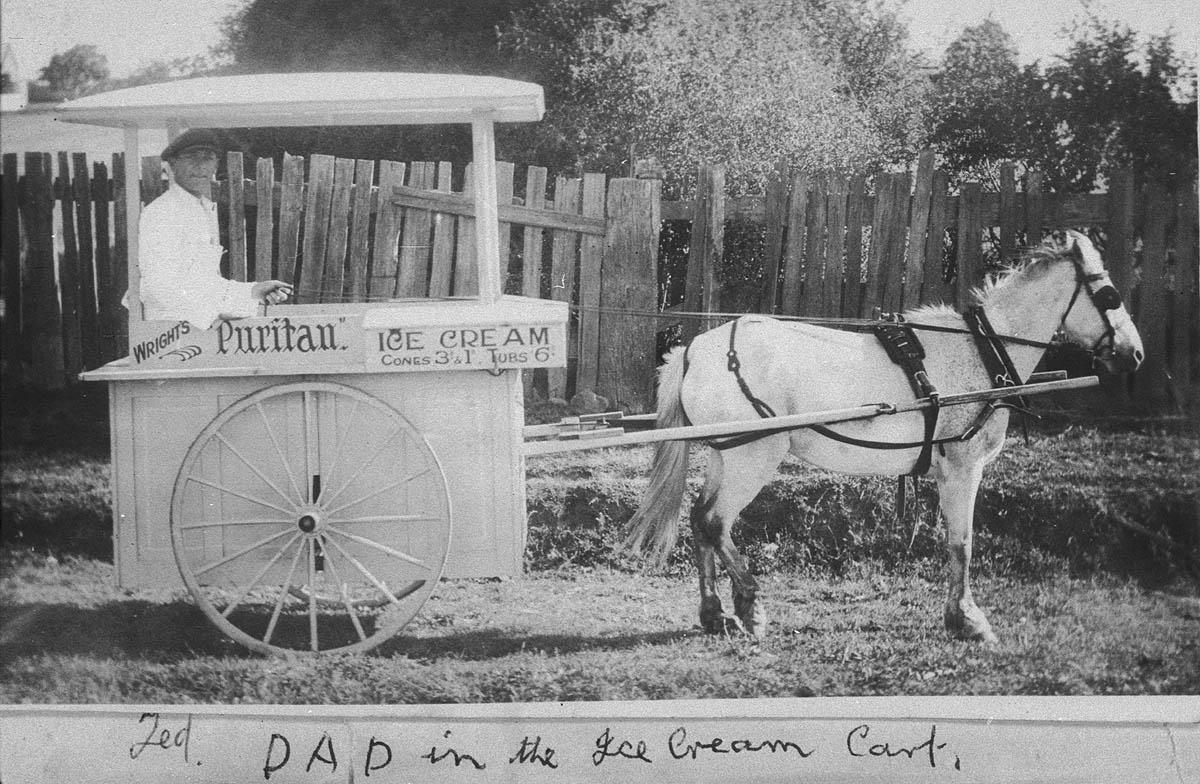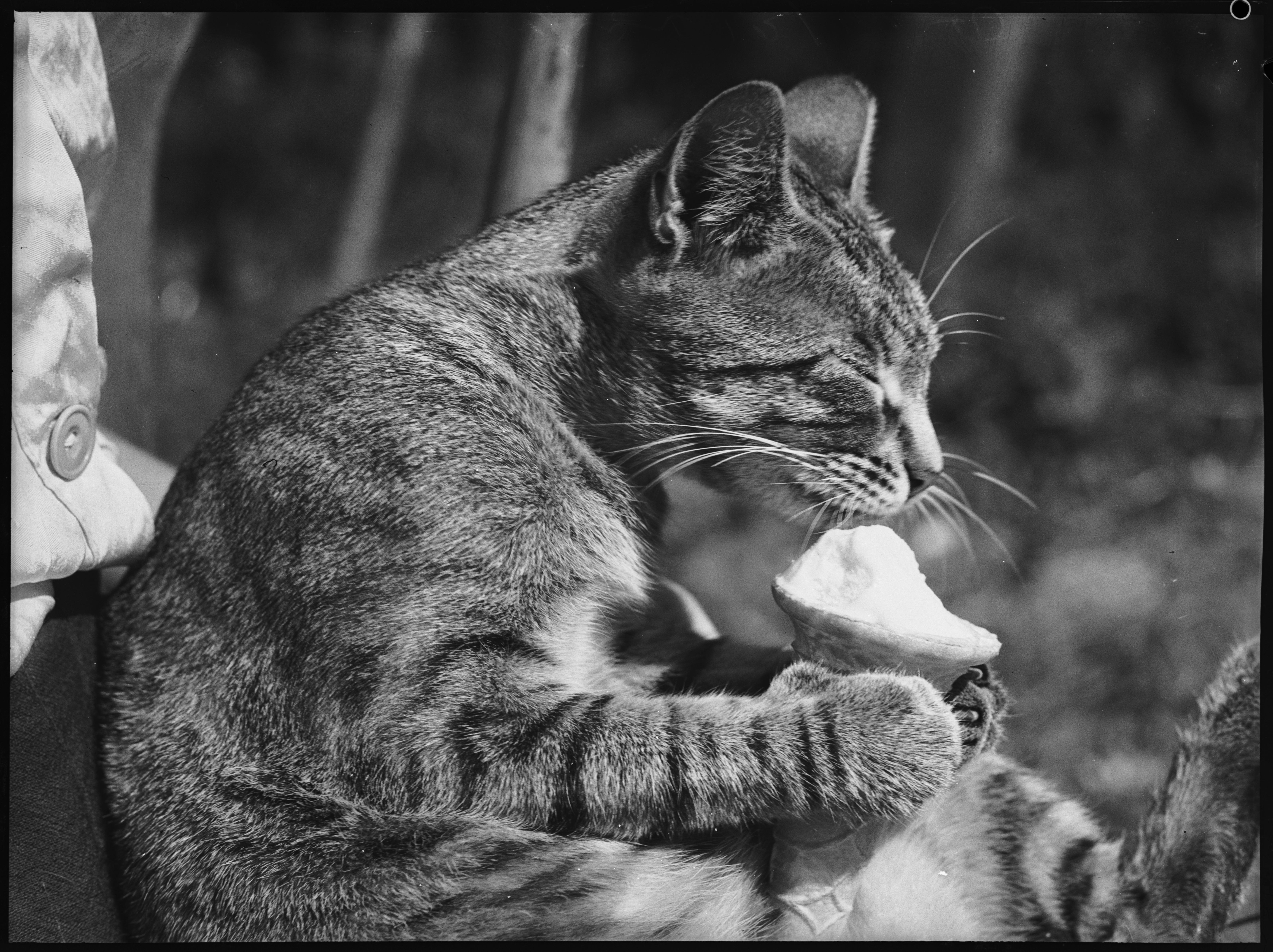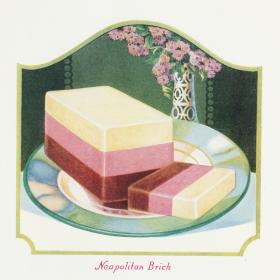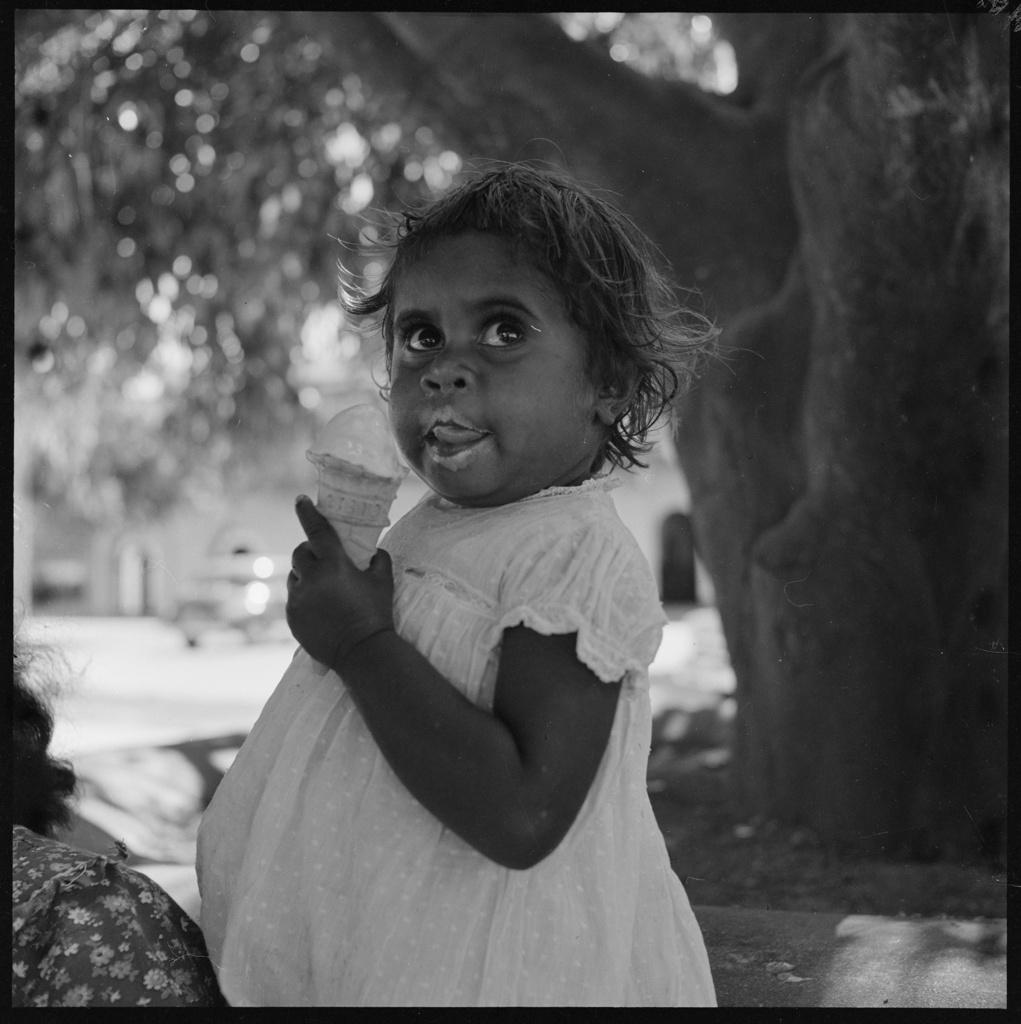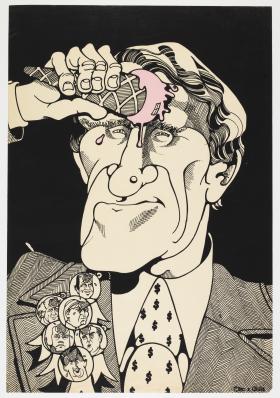Take 5 ice creams
In celebration of summer, here are some of our favourite ice cream images from the collection.
Cool delivery
Australians of all ages are keen ice cream eaters and our ice cream history has been influenced by American and Italian traditions. In the early 1900s, before home refrigeration, ice cream was bought directly from the manufacturer, delivered to customers by horse and cart or scooped fresh into cup or cone by street vendors. Thelma and Ted Harbrow operated their ice cream cart in Bega, NSW, in the 1930s, selling Wright’s Puritan Ice Cream, an American brand first established in 1908.
Purrfectly delicious
On Saturday 5 March 1949, the front page of the Newcastle Morning Herald and Miners’ Advocate, ran this headline: ‘Even a Cat can like ice-cream.’ The article told the story of Coconut, a three-month-old kitten, who loved ice cream, preferably flavoured, and who could hold the cone with its tiny paws. Each afternoon the kitten was taken by its owner, Irene Graham, 14, to buy ice cream from Mrs Wall’s shop in Percy Street, Lambton. Coconut was known to have eaten up to four ice creams in one day. (Readers who own cats should note that small doses of vanilla ice cream are safe for felines but can cause digestive upsets.)
Fancy creations
One of Australia’s best-loved brands, Peters Ice Cream, was founded in a disused shed in Manly in 1907, by American Fred Peters. Business flourished, so Peters leased two small freezers in an ice factory in Paddington, before opening his own factory in Redfern in 1923, then the world’s largest ice creamery. In the 1930s, Peters American Delicacy Co. Ltd began offering customised ice cream desserts, ordered by phone for home delivery and packaged in dry ice to stay frozen for up to eight hours. The popular ‘Neapolitan Brick’ came in two sizes, with its three layers (vanilla, strawberry and chocolate) arranged on top of each other to be cut into slices for serving. Peters’ slogan until the mid- 1970s was ‘The health food of a nation’.
Summer delight
Taken in Queensland in 1965, this image of an Aboriginal girl eating an ice cream is one of Max Dupain’s best photographs. Dupain’s intention in creating this image is not known but it may have been a comment on the inequalities faced by First Nations peoples before the 1967 referendum to improve Indigenous rights. The Dupain archive reveals that the little girl was also photographed with other family members. For this iconic image, shot at eye level and looking straight ahead, she becomes the central focus of the frame, and conveys the universal ‘lip-licking’ delight of enjoying an ice cream cone on a hot day.
Brain freeze
This 1970s satirical poster by ‘Otto and Chris’ shows a flamboyant caricature of Malcolm Fraser, Liberal Party leader and 22nd Australian Prime Minister (1975 to 1983), portrayed as the Ice-Cream Kid. The iconic psychedelic image of a goofy character squashing an ice cream cone against his forehead was first created by American rock-and-roll graphic designers Stanley Mouse and Alton Kelley for the Grateful Dead’s Europe ’72 album cover. In November 1974, National Lampoon’s magazine featured a similar portrait of President Gerald Ford. The local version goes one step further, adding six campaign buttons pinned to Fraser’s lapel: fellow conservative politicians Sir Phillip Lynch, Sir William McMahon, Doug Anthony, Sir Joh Bjelke-Petersen, Reginald Withers and Governor-General Sir John Kerr each with an ice cream stuck to their forehead.
Margot Riley, Curator, Research & Discovery.
This story appears in Openbook summer 2021.
